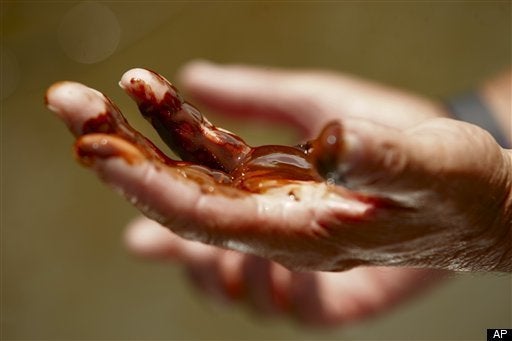
On April 20, 2010, at 10 pm, 50 miles southeast of Venice, Louisiana, the oil and gas industry changed forever. Eleven good men lost their lives at the moment that BP's Mississippi Canyon Block 252 exploratory well violently blew out, shooting over the crown of the derrick seawater that had been used to displace the heavier drilling mud in the riser that connected the semisubmersible rig to the well 5,000 feet below it. Gas followed almost instantly, sucked into the inductions of the deck engines. Breathing in huge gasps of hydrocarbon-rich air into the fuel mixture, the overwhelmed engines ran away with themselves, exploding in moments. The blasts set off a chain reaction of events that ignited the giant jet of oil and gas coming up through the drilling rig floor, incinerating everything that was close. All power was instantly lost. Transocean's Deepwater Horizon was doomed.
Everything that could go wrong did go wrong. The entire rig floor crew was dead. Whoever triggered the blowout preventer (BOP), if they did, failed to activate it. The deadman, a system that automatically closes the BOP if it loses contact with the rig on the surface, failed. The emergency disconnect that blows the riser away from the top of the BOP failed. The well was flowing uncontrolled to the surface while the rest of the crew scrambled for the lifeboats or jumped to safety. The Coast Guard and workboats rushed to the scene, but mostly watched helplessly as the doomed rig began to drift and list, its dynamic positioning and flotation systems dead. Two days later, the rig sank, landing on the bottom 1,300 feet from the blowing out well. It will remain there forever as not only a monument to those who died, but as a stark reminder of the arrogance of overconfidence in sophisticated technology.
The riser, still connected to the well, kinked and fell to the bottom, oil and gas roaring from several breaks in the pipe putting even further stress on the BOP. It remains there today, 35 days after the blowout, as engineers and scientists from BP, Transocean, dozens of contractors, and government agencies scramble to figure out what the hell to do next. Oil has now begun washing up on beaches and wetlands of Louisiana's fragile coastline, and giant plumes of oil are now reaching the loop current that will take the oil out of the Gulf and beyond. No serious person believes that the well is flowing at only the 5,000 barrel per day rate that BP and the MMS have stuck to since the beginning of week 2, and finally, a joint team has been assigned to calculate what we all sense anyway; it's much larger. One can take a little comfort, though, that as the days drag on, the well is flowing less than at the beginning, just due to depletion of the reservoir. In the meantime, the world waits.
So. Now what? All of the shouts of "Drill, Baby, Drill," of the 2008 Presidential campaign are now silent. The free market Libertarians and Tea Party activists, who called for de-regulation of the oil industry and letting the free market solve our energy problems, who also railed against a "government takeover of healthcare" are now ironically calling for a government takeover of BP's well control effort. The voices that speculated that the Obama Administration was secretly planning to shut down the oil and gas industry, then criticized him for not going further in opening new areas to offshore exploration a mere two months ago, are now severely criticizing him for not doing enough to make BP get this well killed, and make offshore drilling safer. Politicians from both sides are doing what they do best: playing politics.
In the midst of this, though, are the real problems confronting us. Some are calling for shutting down all offshore production. We simply can't do that, since over 20% of our domestic energy supply comes from that region, and shutting it down would require us to import more oil, not less, from countries who hate us and use our own money against us. Others call for alternative energy sources and nuclear. These should certainly continue to be developed, but none of these technologies are no where close to taking any material part of our energy demand, especially transportation. They are years, if not decades away.
Surely, even the most ardent free marketer sees the results of a self-policed regulatory system and non-standard operating procedures. As it now stands, the government is completely incapable of dealing with a disaster of this magnitude and is at the mercy of the industry. The technology, equipment, and people all belong to private enterprise. Since the government has no resources to deal with an incident of this scale and technical complexity, the only way it could take control is to nationalize the oil industry, which no one believes is the proper course.
- An immediate moratorium on all offshore drilling that involves sea floor well control, until standardized systems are developed and tested that prove a well can be controlled and killed without the necessity of a connected surface rig.
- Development of a sophisticated, high volume, subsea oil collection system that is available 24/7 to the industry for more efficient clean up of spills in the event they do occur.
- Strict regulation of the types and use of oil dispersants to mitigate damage to the environment and life.
- Complete the split of the MMS into the three agencies, making safety and environmental regulation totally separate from the revenue and leasing functions.
- Conform safety, equipment, procedures, and inspections for all vessels working in US waters, whether they are foreign or US flagged. Strengthen tax regulation to assure all vessels are on equal footing.
- Establish a subsea technology function within NOAA or the MMS to advance the research, standardization, and regulation of all subsea operations in US waters, with the goal of making these functions safer and more reliable.
More on The Daily Hurricane Energy page

